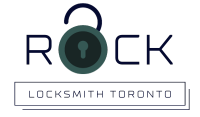Lock system management for buildings in Toronto is a crucial aspect of facility management, ensuring the safety and security of occupants and assets. In a rapidly evolving technological landscape, traditional lock and key systems are being replaced with modern electronic access control systems. These systems provide unique features such as keyless entry, remote monitoring, and customizable access permissions, enhancing the overall security of buildings.
One unique fact about lock system management is that it has become increasingly integrated with building automation systems. This integration allows for centralized control and monitoring of different building systems, including access control, HVAC, and lighting. By integrating these systems, facility managers can not only enhance security but also improve energy efficiency and streamline operations.
In the upcoming sections, we will discuss key takeaways related to lock system management for buildings in Toronto. We will delve into the benefits of electronic access control systems, the importance of regular maintenance and updates, and the role of professional locksmith services. By understanding these key takeaways, readers will gain valuable insights into managing lock systems effectively and ensuring the security and efficiency of their buildings.
Key Takeaways
1. The use of advanced digital lock systems in buildings in Toronto is becoming increasingly prevalent, providing enhanced security and convenience for residents and property owners. These systems offer features such as keyless entry, remote access control, and real-time monitoring capabilities.
2. A centralized lock system management platform is crucial for effective administration and control of the lock systems in multi-unit buildings. This platform enables property managers to easily grant or revoke access, monitor user activity, and receive instant alerts in case of potential security breaches or emergencies.
3. The implementation of smart lock systems in commercial buildings can optimize operational efficiency by integrating with other building management systems. These integrations allow for automated access control workflows, seamless visitor management, and synchronized data sharing between different software platforms.
4. The increased adoption of mobile applications as key credentials is reshaping the lock system landscape. Mobile access solutions offer convenience for both building occupants and management personnel, eliminating the need for physical keys or access cards. Additionally, they provide greater flexibility in managing access rights and enable remote control and monitoring of lock systems.
5. Despite the many benefits of digital lock systems, it is important for property owners and managers to prioritize cybersecurity measures. With the rise of connected devices and Internet of Things (IoT) technology, ensuring the proper implementation of encryption protocols, regular software updates, and comprehensive security audits becomes pivotal to protect buildings and residents from potential threats.
How Can Lock System Management Benefit Buildings in Toronto?
1. Importance of Effective Lock System Management
In today’s fast-paced world, security is of utmost importance for any building, and this holds particularly true for buildings in Toronto. Effective lock system management plays a crucial role in ensuring the safety and security of the building’s occupants, as well as their belongings. Without proper lock system management, buildings are susceptible to unauthorized access, theft, and potential vandalism. Therefore, it is essential to implement a robust lock system management strategy to protect the building and its occupants.
2. Establishing a Comprehensive Lock System Management Plan
A successful lock system management plan involves several key components:
a. Security Assessment:
Prior to implementing any lock system management plan, a thorough security assessment must be conducted. This assessment helps identify vulnerable areas within the building, potential security risks, and the specific needs of the building’s occupants. Understanding these factors allows for the development of an effective lock system management strategy.
b. Access Control Systems:
Implementing access control systems is an integral part of lock system management. These systems enable authorized individuals to enter the building while restricting access to unauthorized personnel. Access control systems may include key cards, biometric systems, or keypad entry systems. By utilizing advanced access control systems, building owners can enhance security measures and prevent unauthorized entry.
c. Key Management:
Effective key management is vital for lock system management. Buildings in Toronto often have various access points, such as individual units, common areas, and shared facilities. Keeping track of all keys issued, ensuring they are returned when necessary, and promptly changing locks when keys are lost or stolen help maintain a secure environment. Implementing key management protocols streamlines the management process and minimizes potential security risks.
d. Regular Maintenance and Upgrades:
Lock systems are subject to wear and tear, requiring regular maintenance and occasional upgrades. Routine inspections and maintenance ensure that locks are in proper working condition, minimizing the chances of malfunctions or security breaches. Additionally, keeping up with technological advancements in lock systems allows buildings to benefit from advanced security features and stay ahead of potential threats.
3. Benefits of Professional Lock System Management
Opting for professional lock system management services offers numerous benefits:
a. Expertise and Experience:
Professional lock system management providers have the necessary expertise and experience in handling various lock systems. They stay updated with the latest industry trends and best practices, ensuring optimal security for buildings. Their knowledge allows for the implementation of efficient lock system management strategies tailored to the specific needs of a building.
b. Enhanced Building Security:
By entrusting lock system management to professionals, buildings in Toronto can enjoy enhanced security measures. Professionals identify vulnerabilities, implement robust security protocols, and regularly update the lock system to mitigate risks. This significantly reduces the chances of unauthorized access and protects the building and its occupants.
c. Time and Cost Savings:
Outsourcing lock system management saves building owners time and money. Professionals handle all aspects of lock system management, including maintenance, repairs, and upgrades. This eliminates the need for in-house staff to deal with lock-related issues, allowing them to focus on their core responsibilities.
d. Emergency Assistance:
Lock system emergencies can occur at any time, requiring immediate attention. Professional lock system management providers offer 24/7 emergency assistance, ensuring prompt resolution of any lock-related issues. This swift response prevents prolonged security vulnerabilities and minimizes disruptions for building occupants.
4. Tips for Effective Lock System Management for Buildings in Toronto
- Regularly assess and update building security measures to address evolving threats.
- Implement a comprehensive access control system to restrict unauthorized entry.
- Maintain a thorough record of keys issued and promptly address any lost or stolen keys.
- Conduct routine maintenance and inspections to ensure proper functioning of locks.
- Stay informed about advancements in lock system technologies to enhance building security.
Frequently Asked Questions
1. Can I upgrade my existing lock system to a digital one?
Yes, you can upgrade your existing lock system to a digital one. There are various digital lock solutions available that can be easily installed and integrated with your current system.
2. Are digital lock systems more secure than traditional lock systems?
Yes, digital lock systems are generally more secure than traditional lock systems. They offer features like encryption, access control, and audit trails, which enhance the overall security of your building.
3. How can a digital lock system simplify access management?
A digital lock system simplifies access management by eliminating the need for physical keys. Authorized individuals can access the building with the help of key cards, fobs, or even smartphone apps, making it easier to grant or revoke access as needed.
4. Can I remotely monitor and control my lock system?
Yes, many digital lock systems allow you to remotely monitor and control access. You can use a central system to track who enters and exits the building, granting or denying access from anywhere with an internet connection.
5. Can a digital lock system be customized to my specific requirements?
Yes, digital lock systems are highly customizable. You can define access privileges for different individuals or groups, set time restrictions, and even integrate the system with other security solutions to cater to your specific requirements.
6. What happens if the power goes out? Will I be locked out of the building?
No, most digital lock systems have backup power options to ensure continuous operation even during a power outage. Additionally, they often have alternative access methods, such as mechanical keys, to prevent individuals from being locked out.
7. Can a digital lock system be integrated with other building management systems?
Yes, digital lock systems can be seamlessly integrated with other building management systems. This integration allows for efficient coordination between security, access control, and other building functions.
8. Are digital lock systems difficult to maintain?
No, digital lock systems are generally easy to maintain. Regular software updates ensure optimal performance, and any hardware issues can be easily addressed by qualified professionals. Additionally, remote troubleshooting options minimize downtime and support costs.
9. Are there any regulations or standards for lock system management in Toronto?
Yes, building lock system management in Toronto falls under various regulations and standards, such as the Ontario Building Code. It is crucial to comply with these standards to ensure the safety and security of occupants.
10. How much does a digital lock system for a building in Toronto cost?
The cost of a digital lock system for a building in Toronto can vary depending on factors such as the size of the building, the number of access points, and the desired features. It is best to consult with a professional locksmith or security provider for an accurate estimate.
Final Thoughts
Implementing a robust lock system management strategy is essential for buildings in Toronto to safeguard occupants and assets. Digital lock systems offer numerous benefits, including enhanced security, simplified access management, and seamless integration with other building management systems. Their ability to be customized and remotely monitored makes them a convenient and scalable solution for any type of building.
As technology continues to advance, it is crucial for building owners and operators to stay informed about the latest lock system management options available in Toronto. By investing in a reliable and modern lock system, you can ensure the overall safety, efficiency, and compliance of your building, while also providing peace of mind to occupants and stakeholders.






Recent Comments